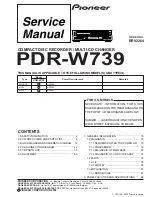
30
DO NOT LUBRICATE
your key machine with LPS-1 or WD-40 in place of number 30 non-
detergent motor oil. You may use LPS-1 or WD-40 as a rust preventative in addition to the number
30 non-detergent motor oil. If you only use LPS-1 or WD-40 as your machine’s lubricant you will
eventually damage the machine. These “lubricants” act more like solvents than lubricants – they
work partially as a solvent that extracts already existing oils from bearings and other parts and
redistributes this existing oil along the surfaces that need oil. Eventually you will exhaust all oil
reserves in the machine’s parts and the machine will be operating as an oil-dry machine.
DO NOT
allow any oil or grease to get on the machine’s drive belt or pulleys. When handling these
parts be sure your hands are clean and free of any lubricants.
DRIVE BELT
Keep your machine’s drive belt tight. Your machine’s belt tension is maintained by means of a ball
bearing idler assembly. To adjust the belt tension- use your 3/16” Allen Hex Wrench and loosen the
cap screw in the center of the idler bearing assembly. Push the bearing hard against the belt and
retighten the cap screw. See figure 28.
This machine is design for a tight belt. The motor and cutter shaft are all quality ball bearing
constructed and a tight belt does not affect them. See illustration showing correct position for the idler.
FIGURE 28
KEY MACHINE ACCURACY
Generation Cutting
Generation cutting is a process where the key machine operator takes a fresh cut key and duplicates
another key off of it, then takes that freshly cut key and duplicates another from it, and so on. The idea
is to cut as many “generations” as possible and still have a working key. This is interpreted as a “test”
of the quality of the key machine.
What key machine operators often forget is if the depth adjustment is off by as little as 1-1/2
thousandths of an inch (.0015”) they will accumulate generations. In as little as five generations the
key probably won’t work in the lock.
In reality, generation cutting is a representation of the entire key cutting process (key machine,
operator, and adjustments) and the results you get are either good or bad – but you don’t learn the
reason why you are getting good or bad results. Your results do not indicate the quality of the key
machine, the quality of the operator, or the quality of the adjustments made to the machine. All
questions remain unanswered.
Summary of Contents for RY256
Page 2: ...2...



























